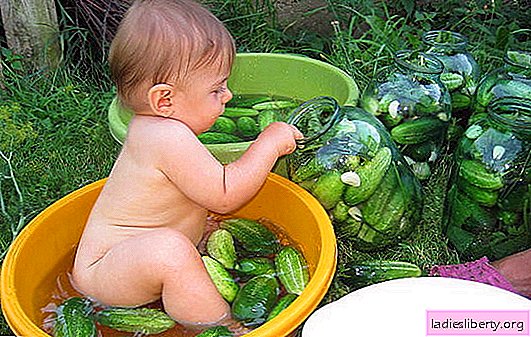
Let’s first understand why it is necessary to purify water if it looks transparent, does not smell unpleasant and has a tolerable taste?
Although tap water or well water looks good, it needs to be cleaned.
Because it contains lime, impurities of iron, various salts of heavy metals. It contains harmful microorganisms - microbes, viruses.
In addition, ordinary tap water has a lot of chlorine, it is added to destroy harmful microbes.
But chlorine destroys the proteins that are contained in the body.
Water from the well and the tap is different in the impurities contained. She enters the apartment with chlorine, and from the well with admixtures of lime and iron.
How to purify water at home: technical devices
To understand how to purify water at home with technical devices, you need to figure out what types of filters and types of water purification are, as well as understand what ozonation is.
4 types of filters are used:
1. Inlet filter
2. Filter jug
3. Table filter
4. Reverse osmosis system
1. Pipe filter. It is screwed to the water pipe, inside the filter is a cartridge, water passes through it. You can put a lot of filters with a variety of cartridges: coal, sedimentary.
Advantages:
• Cheap filter.
• The cartridge must be replaced after 2-3 months.
• The filter cleans water from certain impurities, it depends on which cartridges are used.
• Cartridges are very easy to replace.
• It takes up a small space on the crane.
Disadvantages:
• Removes precisely those impurities that a particular cartridge removes.
• Pressure (water pressure) decreases slightly.
• There is no constant supply of water.
• It skips some bacteria.

2. Filter jug - This is a vessel that has a cartridge for water purification. When placing water in a jug, it passes through the cartridge and is cleaned.
Advantages:
• Inexpensive.
• Easy to apply.
• The filter jug can be moved to any place.
Disadvantages:
• Water does not clean under pressure, that is, it does not clean too much.
• Water is in the open air, that is, microbes can get there from the air.
• The cartridge often needs to be replaced with a new one, so system costs increase.
• If the cartridge is not replaced, it becomes dirty and then the water becomes worse than from the tap.
• Such a filter does not clear some bacteria.

3. Table filter. He has his own tap, it can be connected to the pipe or to the tap itself. It may have a capillary membrane, it removes impurities up to 0.001 microns in size.
Advantages:
• It can be put in the most convenient place in the kitchen.
• It is very easy to replace the cartridge.
• Buying is inexpensive.
Disadvantages:
• Bacteria gradually accumulate there.
• He is not collecting water.
• Some types of viruses and bacteria remain after its use.
4. Reverse osmosis systems, their main part is a membrane, it filters out water according to the principle of reverse osmosis. Usually, they have several filters up to the membrane, which purify the water and the tank. The tank accumulates clean water. The membrane itself is continuously cleaned with part of the filtered water, all impurities go into the sewer. Mineralizers can also be used to improve the taste of water.
Advantages:
• Water becomes perfectly clean.
• The systems are convenient to use.
• The tank stores a supply of clean water.
• The system destroys all bacteria, viruses, removes salts of heavy metals.
Disadvantages:
• High price
• The system takes up a lot of space.
Types of water treatment:
De-icing filters eliminate manganese, as well as iron. They have manganese dioxide, so when a solution of manganese or iron gets in there, a reaction occurs, these substances become insoluble and remain in the filter, then they are removed when water gets further.
Softeners soften water. They contain backfill, due to which they eliminate impurities of manganese, iron, nitrates, salts of heavy metals, nitrites, sulfates, harmful organic impurities. Filters need saline regeneration, because of this they have a salt tank.
UV sterilizers. Water is irradiated with ultraviolet light, which destroys bacteria. Use ultraviolet lamps mounted in a rigid case.
Carbon filters. Activated carbon perfectly removes chlorine, various gas solutions, and organic substances. Now they use activated charcoal made from coconut shells, which has an adsorption 4 times greater than coal obtained from ordinary wood.
Sediment filters. They eliminate any mechanical particles, such as river sand, rust, and other precipitation. To remove very large particles (more than 20-50 microns), apply disk or mesh filters for rough cleaning. Their disadvantage is that if they are very dirty or a large amount of water passes through them, then they must be washed very often.
Reverse Osmosis Filters. These are practically the best filters. The reverse osmosis process separates water and various impurities at the molecular level, they are located on different sides of the membrane. The membrane retains large molecules of harmful organic compounds, bacteria, but freely passes oxygen. Thus, perfectly purified drinking water is obtained.
Water ozonation
For example, you can buy a Tiensky ozonizer, it adds ozone to the water. If you process food (fruits, vegetables) with such water, then it will clear them of hormones, harmful microbes, chlorine, pesticides.
Put the ozonizer atomizer in a pan with water, turn it on, let it work for 20 minutes. A layer of dense foam appears on the surface of the pan, which must be removed.
How to purify water at home: folk methods
Consider how to purify water at home using the simplest folk methods.
1. Defending
This is the easiest and easiest way. Pour water into the bucket in the evening, and gently pour 2/3 of the water from the bucket into a clean dish early in the morning. If you defended water from a well, then the remaining 1/3 of the water will contain lime, clay, river sand, and iron. And if the water was taken from under the city tap, then all the chlorine will evaporate during the night. True, with this method, the causative agents of intestinal infections and salts of heavy metals remain in the water.
2. Boiling
Another fairly easy way is to boil water for 10-15 minutes. Then all the microbes will die, and the impurities of calcium, iron, magnesium will precipitate. But it is well suited for well water. But chlorine will remain.
3. Freezing
Pour water into a large enameled saucepan, then put in the freezer. When half the water in the pan becomes ice, remove it. In its middle part dirt will collect. If you pour boiling water from the kettle into its middle, then the dirty water will melt and drain down, and you will only have pure ice. Pour out the dirt that you have left at the bottom of the pan, there will remain salts of heavy metals and iron. Melt clear ice.
The disadvantage of freezing - with this method, water contains few mineral salts that are useful. To eliminate this drawback, you can pour 100 ml of mineral water into 1 liter of such water.
4. The use of silicon
Silicon removes many harmful bacteria. Get silicon, rinse it thoroughly. Dip it in a pot of water, cover it with gauze, leave it for 3-5 days, and best of all for 7 days in the dark. After carefully pour the settled water into another container, close the lid. Do not drain the bottom layer of water, let 3 cm of water remain in a saucepan with silicon. There will be impurities of lime, iron, salts of heavy metals. And silicon forms a white film. Therefore, the stone must be thoroughly washed with dirt. Wipe the silicon with a toothbrush. If you do not have silicon, then you can take an earthen pear root crop. Jerusalem artichoke has the highest silicon content compared to other root crops and vegetables.
And the water that you poured into another dish can not only be drunk, but also used for cooking.
5. Activated carbon cleaning
Coal not only removes unwanted odors, it also collects a large amount of harmful impurities. Put 5 tablets of charcoal on cheesecloth, wrap and place overnight in a pot of water, 1 tablet cleans 1 liter of water. In the morning, the water will already be purified. This method is perfect for cleaning water from a well; it removes impurities of iron and lime.
Silver cleaning
Put a silver fork or spoon on the bottom of the pan with water. Let the water stand all night. Then after 12 hours by morning, silver will remove a large number of harmful microorganisms. But the disadvantage of silver is that it does not clean water from salts of heavy metals and iron. And also with an excess of silver in the body, specific diseases can occur, skin pigmentation can change.
How to purify water at home: causes of failure
To understand how to purify water at home, it is important to remember that each specific filter, as well as any alternative remedy, removes only certain impurities, so you need to use them in combination. For example, silver removes harmful bacteria, and activated carbon removes impurities of lime and iron. If you know what kind of harmful impurities are contained in your water, then select certain filters and folk remedies that you need to clean it. Try to analyze your water to determine its composition.
Also do not forget that in the filters you need to change the cartridges as they are used. Particularly often change cartridges in filter jugs.











